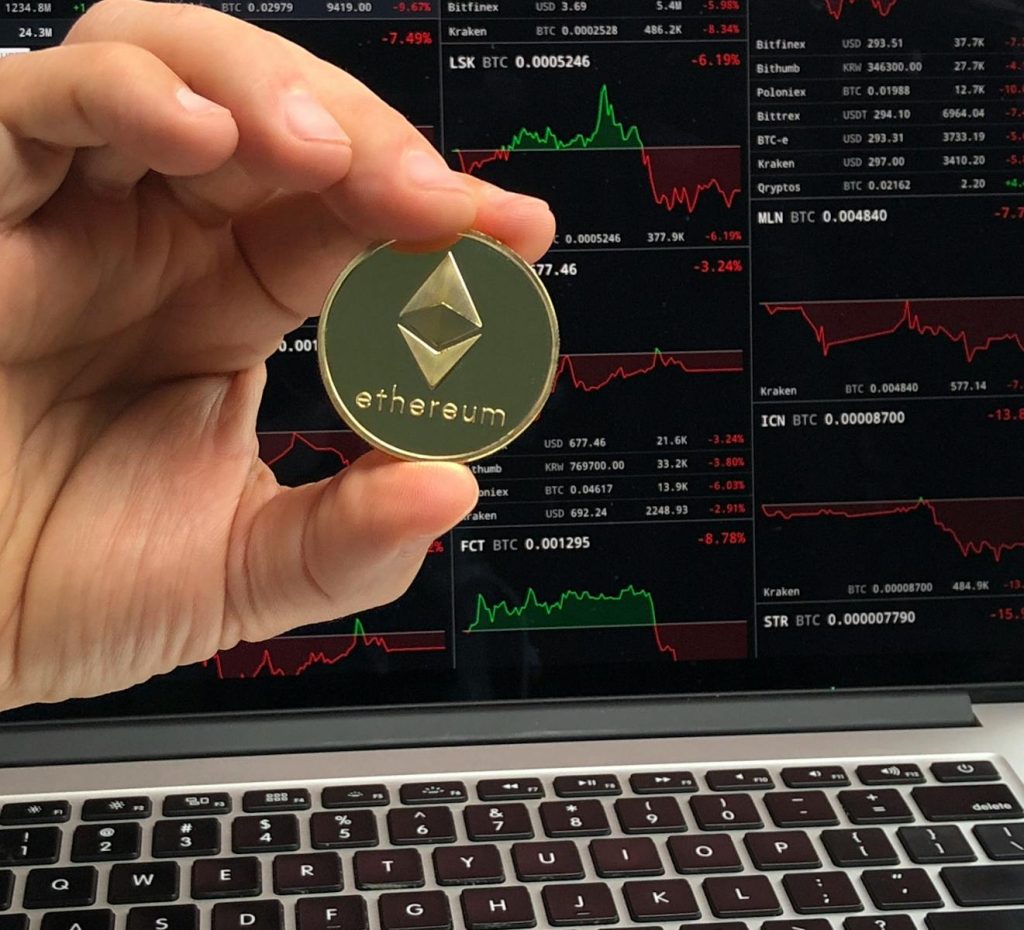As the landscape of cryptocurrencies continues to evolve, understanding the supply dynamics of Ethereum (ETH) becomes increasingly important for investors and enthusiasts alike. The Ethereum blockchain, a foundational pillar of the crypto ecosystem, operates under unique principles that differentiate it from Bitcoin and other cryptocurrencies. In this article, we will delve into the total supply of Ethereum, its circulating supply, and what these figures mean for the future of the Ethereum network.
Understanding the Total Supply of Ethereum
The total supply of Ethereum refers to the maximum number of ETH tokens that can ever be created. Unlike Bitcoin, which has a capped limit of 21 million coins, Ethereum does not have a hard cap on its supply. However, the Ethereum community and the Ethereum Foundation have implemented mechanisms to control inflation and enable a deflationary model, particularly with the transition to Ethereum 2.0. This shift aims to improve scalability and sustainability, which will ultimately impact the market cap and Ethereum price in the long term.
What is Ethereum’s Circulating Supply?
The circulating supply of Ethereum is the number of ETH tokens that are currently available and actively traded within the market. As of 2022, there are approximately 18 million ETH in circulation. This figure is essential for determining the liquidity and overall health of the cryptocurrency market, as it directly affects transaction fees and the gas price on the Ethereum network. Unlike the total supply, which includes all ETH ever created, the circulating supply gives a clearer picture of how many Ethereum are in active use today.

Total Supply of Ethereum: Key Figures
To grasp the total supply of Ethereum, it is crucial to understand the key figures associated with it. Although there is no fixed maximum supply, Ethereum’s inflation rate has been managed through various protocols. In 2021, significant changes were introduced to reduce the rate at which new coins are minted, contributing to a more limited supply over time. This approach aims to stabilize the value of Ether and ensure that the number of Ethereum tokens remains manageable, especially as the Ethereum blockchain continues to grow and evolve.
Difference Between Circulating and Total Supply
The distinction between circulating supply and total supply is vital for investors looking to understand the dynamics of Ethereum. Circulating supply reflects the ETH tokens that are actively traded, while total supply encompasses all tokens ever issued, including those that are locked or not yet mined. This difference can impact investor perception, as a higher circulating supply may suggest lower scarcity, potentially affecting the future price and market cap of Ethereum. As Ethereum continues to innovate, particularly with the upcoming developments in Ethereum 2.0, these figures will play a critical role in shaping the future of the cryptocurrency landscape.
The Transition to Ethereum 2.0
What Changes in Supply Will Ethereum 2.0 Bring?
The transition to Ethereum 2.0 marks a significant shift in the dynamics of Ethereum supply. With the introduction of the Proof of Stake (PoS) consensus mechanism, Ethereum aims to reduce its inflation rate by limiting the number of new coins created. This transition from a proof-of-work model to PoS will not only streamline the size of the Ethereum blockchain but also enhance the overall efficiency of the network. Consequently, the supply of Ethereum is expected to become more predictable, fostering a deflationary environment that could positively influence the value of Ether in the long run.
Impact of Proof of Stake (PoS) on Ethereum Supply
The adoption of Proof of Stake (PoS) in Ethereum 2.0 fundamentally alters how new Ethereum tokens are generated and distributed. Instead of relying on energy-intensive mining processes, validators will now secure the network by staking their Ether, which reduces the cost of transaction fees while simultaneously increasing efficiency. As a result, the supply of Ethereum will stabilize, and the inflation rate could drop significantly. This shift not only enhances sustainability but also positions Ethereum as a more attractive option compared to other cryptocurrencies, potentially leading to a higher market cap and increased investor confidence.
How Ethereum 2.0 Affects the Price of Ethereum
The transition to Ethereum 2.0 is poised to have a profound impact on the price of Ethereum. By implementing a deflationary model through limited new coin issuance and enhanced network security, investor sentiment is likely to shift towards a more bullish outlook. As many Ethereum tokens are staked, the circulating supply decreases, which can lead to an increase in Ether’s value. Moreover, as the Ethereum blockchain becomes more robust and capable of handling more transactions efficiently, the overall demand for Ethereum could rise, driving up the price and creating a positive feedback loop for the cryptocurrency.
The Future of Ethereum Supply in 2024
Projected Changes in Ethereum Circulation
Looking ahead to 2024, the projected changes in Ethereum circulation will largely depend on the successful implementation of Ethereum 2.0. As more users adopt the PoS mechanism, the number of Ethereum in circulation may stabilize, leading to a more predictable supply. With around 18 million ETH currently circulating, any increase in staking and reduced mining activities will further limit the influx of new coins. This controlled circulation could enhance liquidity and potentially increase transaction volume on the Ethereum network, fostering a healthier ecosystem for all participants.

Deflationary vs. Inflationary Dynamics
The dynamics of Ethereum’s supply will increasingly reflect a deflationary model as Ethereum 2.0 takes full effect. Unlike Bitcoin, which has a fixed supply of 21 million coins, Ethereum’s flexible supply could tilt towards deflation as fewer new coins are minted. This deflationary trend is likely to attract more investors, as the scarcity of Ethereum tokens increases. Conversely, if inflation persists due to unexpected increases in supply or demand, the value of Ether could be adversely affected. Understanding these dynamics will be vital for investors navigating the evolving crypto landscape.
Potential Maximum Supply of Ethereum
While Ethereum does not have a predetermined maximum supply like Bitcoin, the potential maximum supply remains an intriguing topic for discussion. The Ethereum Foundation has emphasized the importance of a controlled supply to ensure stability and growth within the ecosystem. As Ethereum progresses through its 2.0 transition, it is conceivable that mechanisms will be introduced to limit excessive inflation, thereby establishing a more defined range for Ethereum’s potential maximum supply. Investors will need to monitor these developments closely, as they could significantly influence the cryptocurrency’s market cap and price trajectory in the coming years.
Implications of Ethereum’s Supply for Investors
Understanding Trading Volume and Its Impact
The trading volume of Ethereum is a critical metric that investors must consider when evaluating the cryptocurrency’s market performance. A higher trading volume typically indicates increased interest and activity within the Ethereum network, which can lead to greater liquidity and a more stable price. For investors, understanding the relationship between the circulating supply of Ethereum and trading volume is vital. As the number of Ethereum tokens in circulation influences transaction fees and the gas price, fluctuations in trading volume can significantly impact the overall market cap and the perceived value of Ether.
What Does the Supply Mean for New Investors?
For new investors entering the Ethereum ecosystem, grasping the implications of the supply of Ethereum is essential for making informed decisions. With approximately 18 million ETH currently in circulation, understanding how this figure relates to the total supply and the potential for inflation or deflation can shape investment strategies. New investors should also consider how the upcoming changes with Ethereum 2.0 could affect the supply dynamics and potentially increase the value of Ether. By analyzing the number of Ethereum tokens available, investors can better assess their risk and reward potential in the rapidly evolving cryptocurrency market.

Staking and Its Role in Ethereum’s Future
Staking is poised to play a pivotal role in the future of Ethereum, particularly following the transition to Ethereum 2.0. By allowing users to stake their Ether, the network incentivizes participants to lock up their tokens, which consequently reduces the circulating supply. This limited supply, combined with the enhancements in network security and efficiency brought on by the Proof of Stake (PoS) mechanism, can create a deflationary environment conducive to increasing the price of Ether over time. As more Ethereum tokens are staked, the overall market cap could see significant changes, making staking an attractive option for investors looking to maximize their returns.
Conclusion: The Importance of Ethereum Supply
Summarizing the Key Points
In summary, the supply of Ethereum is a fundamental aspect that investors must carefully analyze. With no fixed maximum supply, the dynamics of both circulating and total supply are essential in shaping market sentiment and influencing Ethereum’s price. The transition to Ethereum 2.0 introduces a new era of staking and PoS, which could stabilize the supply and create a deflationary effect. Understanding these key points will help investors navigate the complexities of the Ethereum blockchain and make informed decisions regarding their investments.
Final Thoughts on Ethereum’s Future
Looking forward, the supply dynamics of Ethereum will play an increasingly important role in determining its future. As the network evolves and more users engage with staking, the implications for the number of Ethereum in circulation may lead to enhanced price stability and growth potential. Investors should remain vigilant about developments within the Ethereum ecosystem, as these shifts could significantly impact the perceived value of Ether and the overall cryptocurrency landscape.
Where to Stay Updated on Ethereum Developments
To stay informed about the latest developments in Ethereum, investors should follow reputable sources of cryptocurrency news and updates. Engaging with the Ethereum Foundation and community forums can provide insights into upcoming changes that might affect the supply and overall market dynamics. Additionally, tracking key statistics regarding the circulating supply and staking activity will help investors make well-informed decisions. As the Ethereum blockchain continues to evolve, timely information will be vital in navigating this exciting and rapidly changing environment.


